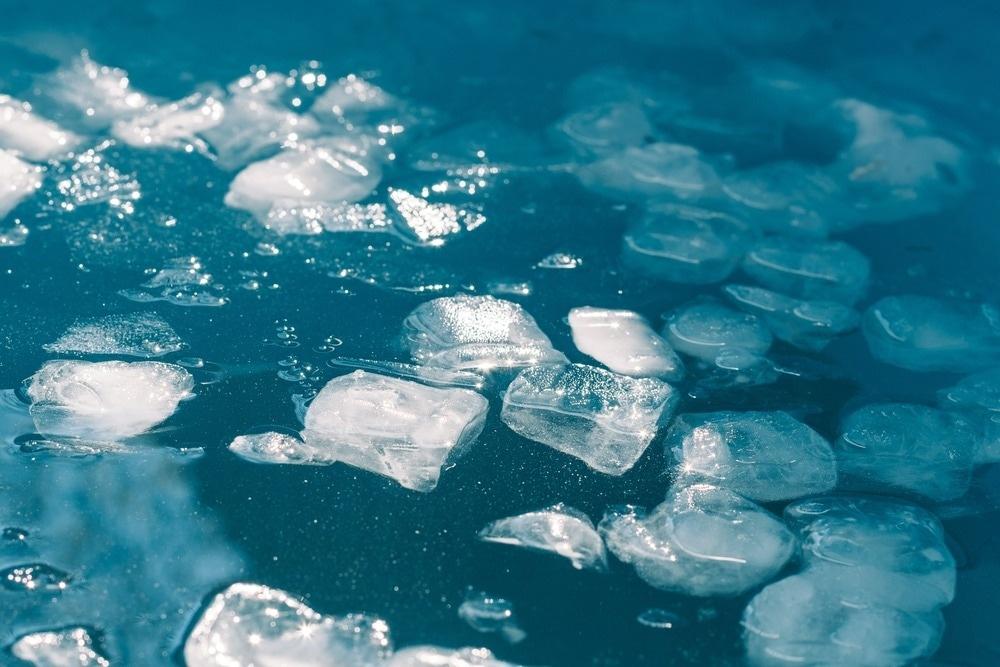
Imagine stepping into a chamber so cold it feels like you’re being wrapped in a shroud of ice, and staying there for just three minutes.It sounds like a scene from a sci-fi horror movie, but for thousands of people around the world, this is a regular part of their health and fitness routine. Welcome to the interesting world of cryotherapy, a trend that’s been gaining traction over the past decade, promising a multitude of benefits ranging from reduced inflammation and improved recovery to enhanced mental clarity.But how did this chilly practice go from being a niche treatment for certain medical conditions to a mainstream wellness phenomenon? To understand the meteoric rise of cryotherapy, we need to look back at its origins and explore the science behind its purported benefits.cryotherapy, in its most basic form, involves exposure to extremely low temperatures. the concept isn’t new; ancient Greeks and Romans used cold water therapy for its health benefits. Though, the modern version of cryotherapy, specifically whole-body cryotherapy (WBC), was first developed in the 1970s by a Japanese rheumatologist named Toshima Yamauchi. yamauchi discovered that by exposing patients to frigid temperatures, he could significantly reduce their inflammation and alleviate symptoms associated with rheumatoid arthritis.The initial setup involved a chamber cooled using liquid nitrogen to temperatures as low as -120°C or -184°F. Patients would step inside, and after a brief exposure, they reported feeling invigorated and experiencing less pain. This was just the beginning of a new frontier in health and wellness.The early adopters of cryotherapy were primarily athletes and individuals suffering from chronic inflammatory conditions. The science behind its effectiveness lies in the body’s response to extreme cold.When you’re exposed to such low temperatures, your body goes into survival mode. Blood rushes to your core to protect your vital organs, and upon exiting the cold chamber, the blood flows back to the extremities, perhaps flushing out toxins and reducing inflammation. This process is believed to stimulate the release of certain neurotransmitters that can help reduce pain and improve mood. As news of cryotherapy’s benefits spread, it wasn’t long before it caught the attention of the wellness and fitness communities. Some of the purported benefits of cryotherapy include:
* Reduced inflammation: Cryotherapy can help reduce inflammation, which is a major contributor to chronic diseases.
* Improved recovery: Athletes use cryotherapy to recover from intense exercise and reduce muscle soreness.
* Enhanced mental clarity: The cold stress induced by cryotherapy may stimulate the release of antioxidants in the body, helping to combat oxidative stress.
One of the most compelling aspects of cryotherapy is its adoption by high-profile athletes and celebrities. From lebron James to Lady Gaga,numerous influencers have publicly endorsed cryotherapy as a critical component of their recovery and wellness routines. This visibility has undoubtedly contributed to its mainstream appeal. But beyond the glamour, there are tangible benefits supported by research. Studies have shown that cryotherapy can aid in muscle recovery after intense exercise, reduce muscle soreness, and even improve mental health by reducing symptoms of anxiety and depression. The mechanism isn’t fully understood, but the cold stress induced by cryotherapy may stimulate the release of antioxidants in the body, helping to combat oxidative stress. For example, a study published in the Journal of Clinical Rheumatology found that cryotherapy significantly reduced symptoms of rheumatoid arthritis in patients.
As with any rapidly growing health trend, cryotherapy has faced its share of skepticism and controversy. Critics argue that the current body of research is not robust enough to support many of the claims made by cryotherapy proponents. There are concerns about safety, with reports of hypothermia and other adverse effects in rare cases. Moreover, the cost of sessions, which can range from $20 to over $100 per visit, has led some to question its accessibility and whether it’s just another luxury health trend catering to the affluent. Despite these criticisms, the cryotherapy industry continues to expand, with cryosaunas and cryochambers popping up in wellness centers and gyms worldwide. The real-life impact of cryotherapy is perhaps best illustrated through the stories of those who’ve incorporated it into their health regimen. Take,for example,professional athletes who swear by cryotherapy for recovery. A notable case is that of Lindsey Vonn, the olympic skier, who credits cryotherapy with helping her manage the physical demands of her sport and aiding in her recovery from injuries.
The science behind cryotherapy is still evolving, with ongoing research aimed at fully understanding its effects on the human body. While some studies have yielded promising results, there’s a consensus in the medical community that more rigorous, large-scale studies are needed to substantiate many of the claims surrounding cryotherapy. Nonetheless, the anecdotal evidence, coupled with the growing body of research, has been enough to sustain the interest of the wellness community. As we continue to explore and understand the potential of this chilly practice, one thing is certain – cryotherapy is here to stay, at least for the foreseeable future.
In recent years, cryotherapy has become more accessible, with various forms of cryotherapy emerging, such as:
| Cryosaunas | A sauna-like experience that uses liquid nitrogen to cool the air |
| Cryochambers | A full-body chamber that uses liquid nitrogen to cool the air |
| Cold showers | A more accessible and affordable alternative to cryotherapy |
These alternatives offer a range of options for individuals looking to incorporate cryotherapy into their health and wellness routine.
The rise of cryotherapy represents a fascinating intersection of ancient practices and modern technology, driven by a quest for wellness and recovery. Whether you’re an athlete looking to enhance recovery, someone dealing with chronic pain, or simply an individual seeking new ways to improve your mental and physical well-being, the allure of cryotherapy is hard to deny.
#Cryotherapy #WellnessTrend #HealthAndFitness #Recovery #MentalHealth #FitnessJourney #WellnessStory #MedicalMystery #HealthTransformation #ScienceOfFitness #InnovativeHealth #FitnessInnovation #ChillOut #Cryosauna #WellnessRevolution #ColdTherapy #HealthFacts










